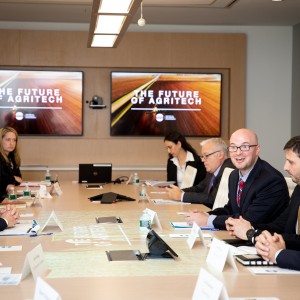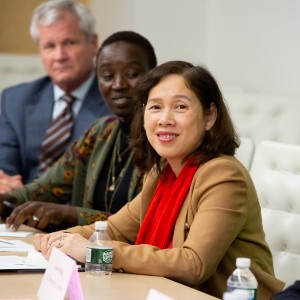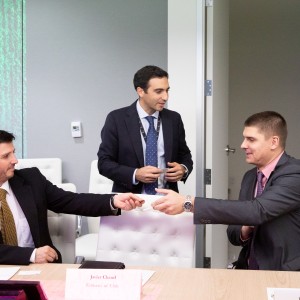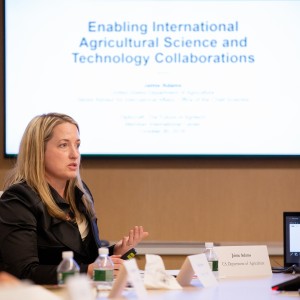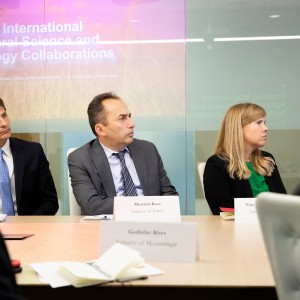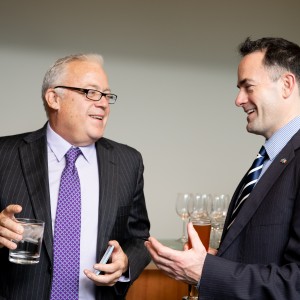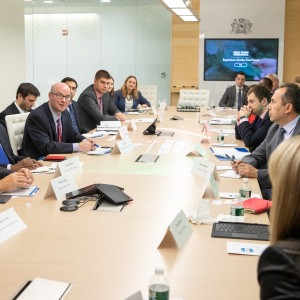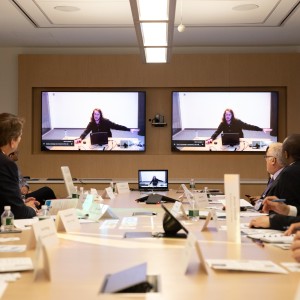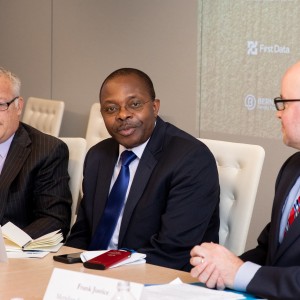Agricultural Attaches Assess Advanced Agritech

The most innovative technology at use today in the agricultural sector is the latest step forward in a path that originates at the Industrial Revolution. These ground-breaking technologies, from drone imaging to seed bio-engineering and advanced irrigation are vital in adapting the agricultural sector to changing climates and growing conditions. Twenty diplomats, private sector representatives and U.S. government officials exchanged perspectives in an October 30th discussion hosted by the Meridian Center for Diplomatic Engagement on the future of the agricultural sector and the use of innovative technology, an under-examined topic in Washington.
There was a lengthy discussion about the challenges and opportunities for agricultural technology research across borders led by Jaime Adams, Senior Advisor for International Affairs from the Office of the Chief Scientist at the U.S. Department of Agriculture. Although support in implementing agricultural technology in developing countries is available through U.S. funding instruments like those administered by USAID, the U.S. Department of Agriculture’s science and technology engagements must be mutually beneficial for both countries. Joint programs leverage foreign and domestic resources to more quickly and efficiently produce solutions for the pressing challenges facing agriculture.
Yifat Alon Perel, Minister of Economic & Trade Affairs at the Israeli Embassy, highlighted how Israel has become a world leader in agricultural technology. The high level of advanced technology used in the Israeli agricultural sector is a direct outcome of the government’s investment in education. The Israeli government invests a large percentage of their GDP into research and development and has fostered a strong entrepreneurial culture. The strong research and trading relationships that Israel has developed with countries including the United States has enabled the small, mostly desert, nation to become more self-sufficient and able to export technologies around the world.
Finally, William Metz, Product Manager at Gamaya and agritech entrepreneur himself, discussed how Gamaya’s hyperspectral imaging technology is used in Europe, South America, Asia and Africa for agronomic intelligence and crop analytics. Given that many within the agricultural sector are not skilled in the latest technologies, it is imperative that technology companies strongly consider the ease of use and geographic/technological limitations for their end user. The deployment of new technologies requires public-private cooperation and joint investment to scale and make an impact on food security and sustainability.
The Diplocraft discussion was held in partnership with Philip Morris International (PMI). In moving towards a smoke-free future, PMI is taking steps to transform its value chain, re-skilling farmers and other employees, sourcing raw materials in a sustainable manner and reducing their environmental footprint.
Project summary
| Agricultural Attaches Assess Advanced Agritech | October 2019 | |
|---|---|
| Number of Attendees: | 20 |
| Regions: | Africa, East Asia and Pacific, Europe and Eurasia, Near East and North Africa, South and Central Asia, Western Hemisphere |
| Countries: | Chile, Denmark, Georgia, Ireland, Israel, Mexico, Mozambique, Pakistan, Russia, South Sudan, Switzerland, United States, Vietnam |
| Impact Areas: | Business and Trade, Energy and the Environment, Entrepreneurship, Food Security, Science and Technology |
| Program Areas: | Diplomatic Engagement |
| Partners: | Private Sector |
